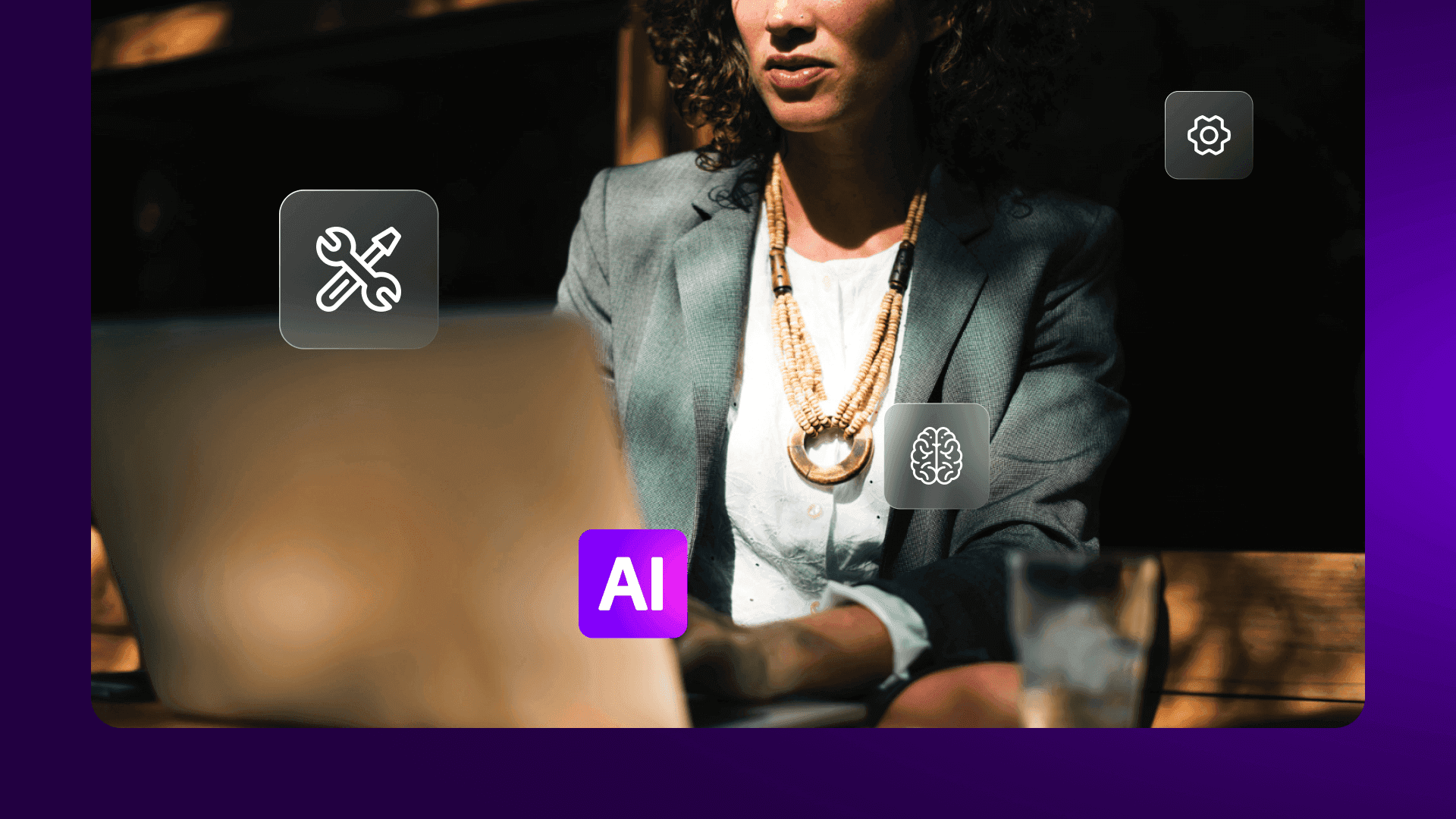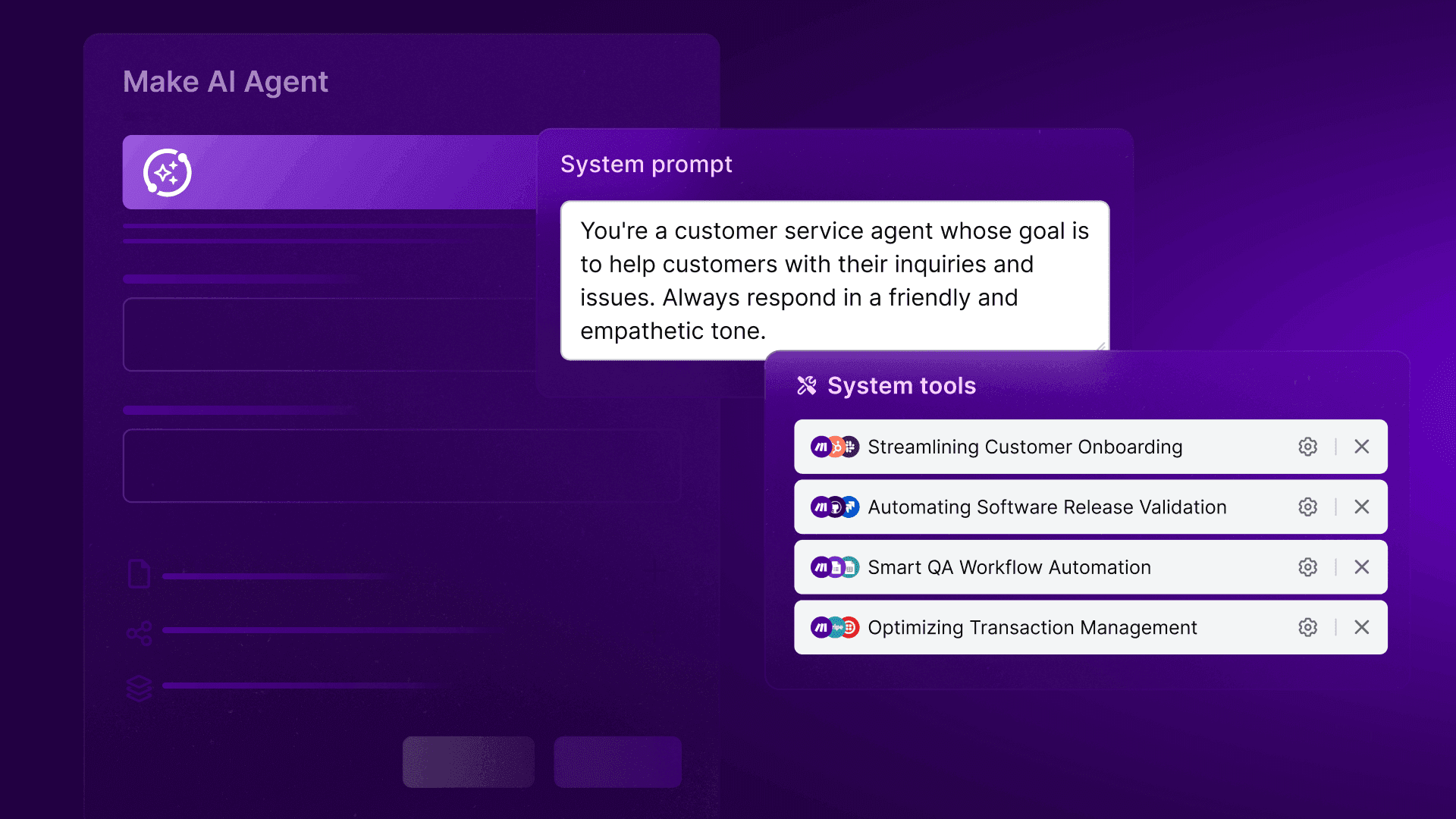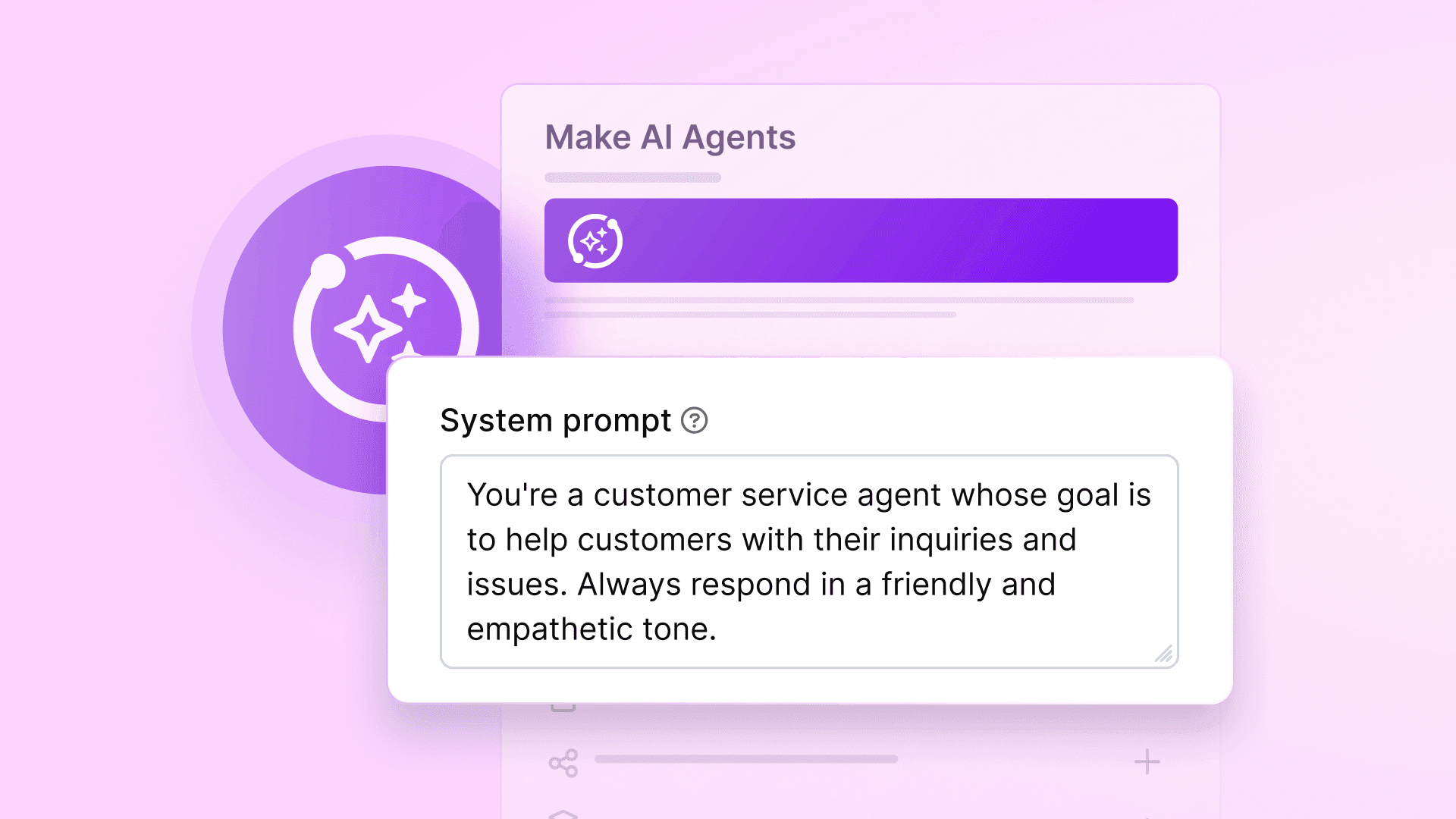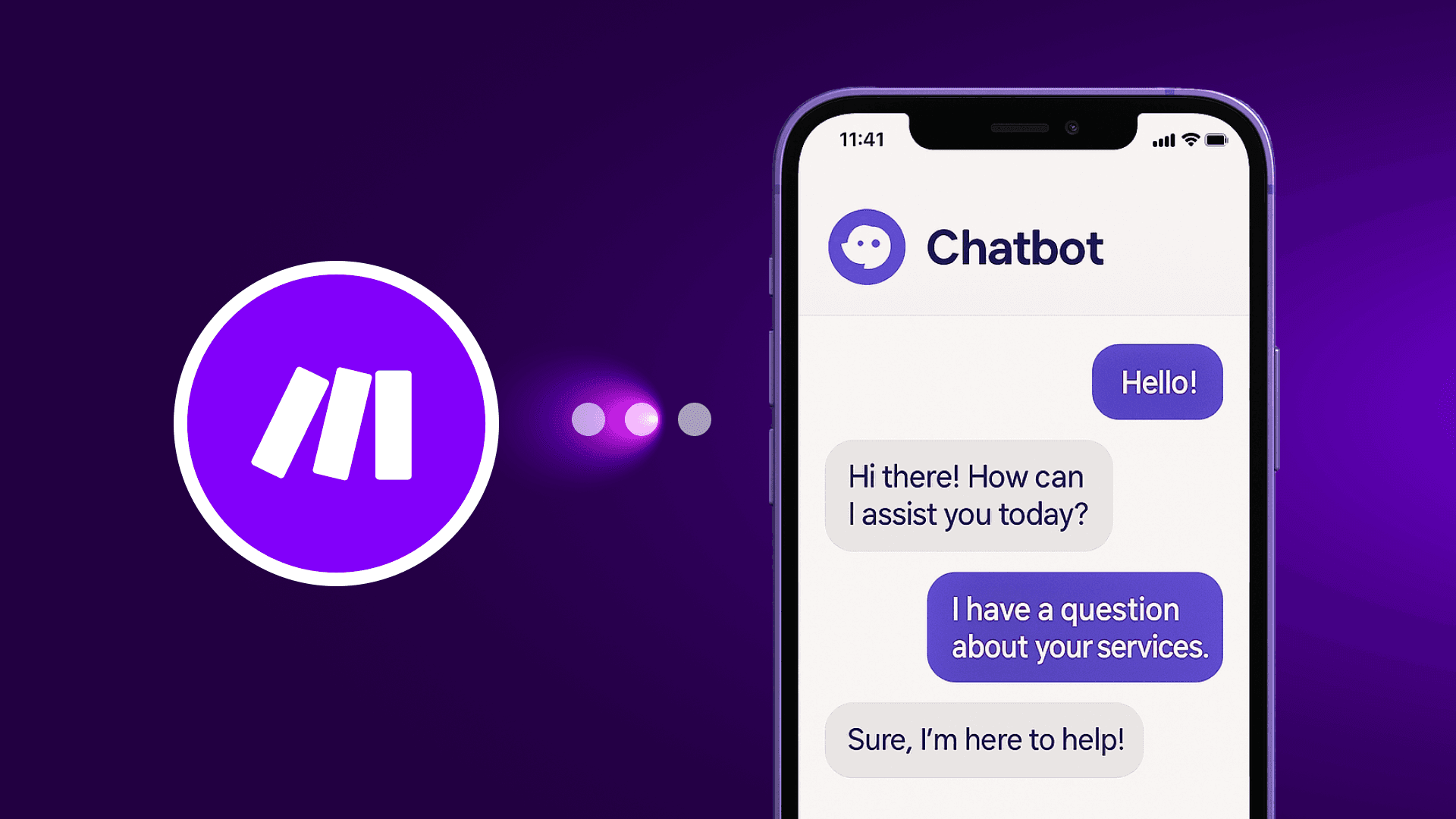Jun 30, 2025 | 5 minutes
Agentic AI tools in 2025
Businesses are adopting agentic AI to stay agile. This guide shows what it is, why it matters, and how to use it.

Agentic AI tools are already transforming the way teams work, enabling systems that can plan, make decisions, and act with minimal human input. As a complement to traditional automation, they’re built to adapt - monitoring context, adjusting strategy, and following through on goals.
According to Bain & Company, 95% of U.S. companies are using generative AI, with production use cases doubling in the past year. As more teams move from testing to real-world deployment, agentic AI is becoming essential infrastructure. At Make we're working hard to equip our customers with the right tools to capitalize on the rise of agentic automation. That's why we launched no-code AI Tools, AI Assistant, and Make AI Agents.
What are agentic AI tools?
Agentic AI tools are digital systems that can determine the next step without being explicitly instructed at every step.
They’re designed to work toward a goal, make decisions along the way, and adjust based on what’s happening - like a smart assistant that doesn’t just follow instructions, but understands the bigger picture and moves things forward on its own. This adaptability ensures that the system can respond to changing circumstances, providing reassurance in your investment.
Key characteristics of agentic AI tools:
Goal-oriented - They pursue outcomes, not just outputs.
Context-aware - They adapt based on changing inputs or states.
Autonomous - Once deployed, they can operate without constant human oversight.
Self-refining - Some tools include feedback loops to improve performance over time.
These tools often run on top of agentic frameworks, which provide the architecture, planning logic, and environment needed for these agents to function. An agentic framework is like the 'rules of the game' for the agentic AI tool. It sets the boundaries, tools, and strategies for the tool to operate effectively. While the framework provides the 'rules of the game,' the agentic AI tool is the player, moving forward, making decisions, and learning as it goes.
Why agentic AI tools are becoming essential for modern businesses
The pressure on businesses to move faster, do more with less, and adapt in real time has never been greater. As systems become more complex and teams more distributed, new and complex problems require a novel and innovative approach.
That’s where agentic AI tools come in - helping teams scale operations, respond dynamically to change, and reduce manual oversight without compromising visibility or control.
Why it matters now:
Increased complexity - Business workflows today span dozens of tools and stakeholders. Agentic AI tools can coordinate across this complexity without constant intervention.
Operational load - Teams are managing more data, more channels, and more decisions. Agentic systems reduce that load by acting on behalf of the user.
Adaptability gap - Markets shift quickly. Static workflows can’t always keep up. Agentic AI tools enable businesses to stay responsive by adjusting actions in real-time.
For growth-focused businesses, this shift isn’t about replacing teams - it’s about supporting them with tools that make operations smoother, smarter, and more scalable. With Make, you can bring agentic AI into your stack using familiar building blocks - no need to reinvent your processes or incur technical debt.
How agentic AI tools work - and what makes them different
At the core, agentic AI tools operate based on a cycle of perception, decision, and action. Unlike traditional automation, which follows predefined rules step by step, agentic systems employ flexible logic and dynamic inputs to determine the next course of action.
Think of it this way: automation runs the playbook you gave it. Agentic AI figures out which play to run - and why.
Here’s how it works in practice:
Perceive the environment Agentic tools continuously monitor their environment - whether it’s incoming data, user behavior, or system changes.
Evaluate options Based on goals and context, the system considers possible actions. It weighs priorities, constraints, and past outcomes before making a decision.
Take action Once a path is chosen, the tool executes it, such as sending a message, adjusting a schedule, or launching a workflow.
Learn and adjust Many agentic tools incorporate feedback loops. They analyze the results of their actions and refine future behavior, often using large language models (LLMs) or reinforcement learning.
This decision-making loop is typically supported by an agentic framework - a structure that provides the agent with boundaries, tools, and strategies to operate effectively. The framework defines the "rules of the game," while the agent adapts in real-time to what is happening.
What makes them different from traditional automation?
Less scripting, more reasoning - Instead of rigid rules, agentic tools operate using intent-based logic.
More autonomy - They can complete multi-step tasks without handholding.
Built-in adaptability - They change behavior based on results, not just instructions.
On Make, you can see this in action with tools like AI Assistant, which dynamically reshapes workflows based on natural language prompts, or Make AI Agents, which execute multi-step tasks across apps based on a defined outcome.
You still decide what success looks like, but you don’t need to define every single step to get there.
Real-world use cases
Agentic AI tools aren’t just for labs or prototypes - they’re already solving real-world problems across teams and industries. From operations to support, these tools are helping businesses respond more quickly, stay organized, and minimize manual handoffs.
Here are a few examples of how agentic AI tools are being used today:
1. Customer support that adapts on the fly
Instead of routing every ticket the same way, agentic systems can assess urgency, assign the right agent, and follow up automatically. A common use case - triaging VIP complaints, escalating them to the right team, and confirming resolution without human input.
2. Sales follow-ups that don't get missed
Agentic tools can monitor CRM activity and trigger actions when deals are at risk of stalling. If a lead hasn’t responded in three days, the system can follow up, adjust the lead score, or alert the right sales rep, keeping momentum going without micromanagement.
3. Inventory management that looks ahead
In retail and e-commerce, agentic tools can predict restock needs based on trends and supply chain signals. They act before stockouts happen - placing purchase orders or updating reorder points automatically.
4. Finance operations that stay on top of the details
Agentic workflows can track invoices, flag inconsistencies, and initiate reviews without requiring a finance team to verify every entry manually. They’re already helping teams stay compliant and organized while reducing back-and-forth.
5. Cross-platform orchestration with Make
Teams are building agentic workflows in Make to coordinate tools such as HubSpot, Slack, Notion, and Stripe. For instance, a Make AI Agent can scan user feedback, categorize comments, and trigger action items in a project board - no extra sorting is needed.
These aren’t theoretical examples - they’re real automations powering lean, adaptable teams today. With Make’s visual-first approach, anyone can build systems that respond to change and act with purpose - no heavy coding required.
How to choose the right agentic AI tools for your team
Choosing an agentic AI tool isn’t just about features - it’s about finding the right fit for your workflows, team skills, and long-term goals. Whether you're automating customer interactions or streamlining operations, the right tool should feel like an extension of your strategy, not another system to manage.
Here are a few questions to guide your evaluation:
1. What problem are you solving, and how complex is it?
Start with your use case. Are you replacing a repetitive task or orchestrating a multi-step process across platforms? Agentic tools are most effective for tasks that require decision-making, context awareness, or ongoing adjustments.
2. Do you need full autonomy or human-in-the-loop control?
Some agentic systems act independently. Others allow human oversight at key points. With Make, you can define how much control you want - from fully autonomous agents to semi-automated flows with approval checkpoints.
3. Can it integrate with your current stack, without extra work?
The best tools don’t just work in isolation - they connect. Make offers native integrations with thousands of apps, so your agentic flows can move across tools like Google Sheets, Slack, Notion, HubSpot, and beyond - without writing custom code.
4. Does the platform scale with your needs?
Look for flexibility. As your team grows, your agentic systems should too, without needing a rebuild. Make’s modular, visual interface means you can update workflows, connect new tools, and evolve logic as your processes change.
5. Can your team build and iterate quickly?
Speed matters. A good tool enables you to transition from idea to working prototype quickly. With Make’s no-code environment and built-in AI tools, your team can test, refine, and launch agentic workflows - even without deep technical expertise.
Tip - Start with one high-impact use case. Prove value early, then expand your agentic footprint across departments. It’s not about doing everything at once - it’s about building momentum that compounds.
Common challenges - and how to navigate them
Agentic AI tools open up new possibilities - but like any emerging technology, they come with trade-offs. Knowing what to expect can help you adapt with confidence and avoid missteps.
Here are a few common challenges - and how to approach them:
1. Lack of visibility or control
Allowing a system to act on its own can raise red flags, especially in critical workflows; the solution is to design for transparency. This way, you can monitor each step of an agentic flow in real time, set guardrails, and decide exactly when human input is required.
2. Overcomplicating early use cases
It’s easy to aim big from the start. But complex goals can stall projects before they deliver value. Start small - choose a use case with clear rules and a defined outcome. Once you see success, expand the logic or layer in more autonomy.
3. Inconsistent data or unclear goals
Agentic tools rely on context, and poor data can lead to poor decisions. Make it a priority to clean up your inputs. Use validation steps, set fallback conditions, and clearly define what “success” means for each agent.
4. Tool overload and stack sprawl
Adding more AI tools doesn’t always mean adding more value. Look for platforms that consolidate, not fragment, your workflow. Make lets you bring AI, automation, and orchestration together in one place, using visual flows that are easy to build and easy to understand.
5. Stakeholder hesitation
Agentic AI is still new for many teams. Not everyone will be ready to hand over control. That’s why Make’s approach is modular. You can start with semi-agentic flows that notify users or ask for confirmation, building trust along the way.
Adopting agentic tools doesn’t mean giving up control. It means creating systems that support you.. And with the proper structure in place, teams can move faster without sacrificing clarity, oversight, or confidence.
Conclusion
For technically minded teams facing complex challenges, agentic AI tools provide a practical path forward. You don’t need to rewrite your stack or outsource innovation. You just need the right environment to design, test, and evolve agentic workflows at your own pace.
That’s where Make fits in.
With visual, no-code tools, native AI integrations, and modular agents that work across 1,700+ apps, Make gives you everything you need to move from idea to execution - without slowing down.
So what’s next? Start with one scenario. Define the outcome. Build your first agent. You’ll be surprised how quickly the impact compounds.
Explore Make AI Tools and start building with agentic AI today.




